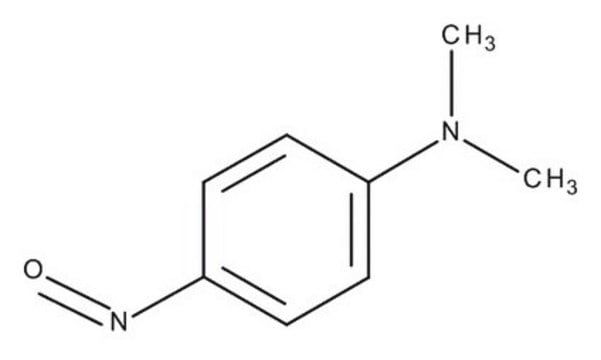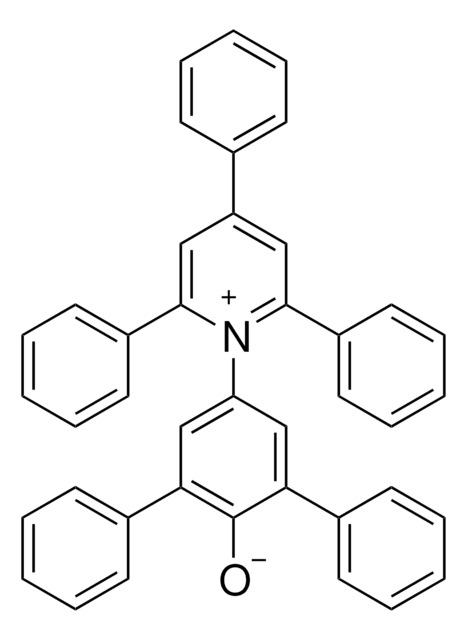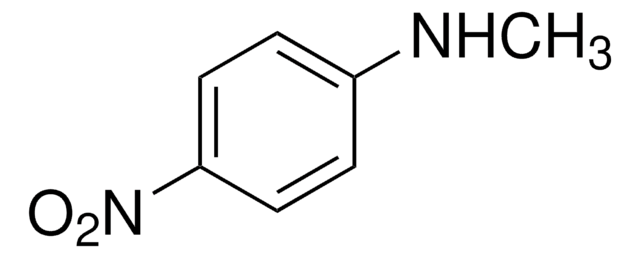D172405
N,N-Dimethyl-4-nitrosoaniline
97%, powder or chunks
Synonym(s):
4-Nitroso-N,N-dimethylaniline
About This Item
Recommended Products
product name
N,N-Dimethyl-4-nitrosoaniline, ≥97%
Quality Level
Assay
≥97%
form
powder or chunks
mp
85-87 °C (lit.)
solubility
ethanol: 5% (green to very dark green)
application(s)
diagnostic assay manufacturing
hematology
histology
storage temp.
room temp
SMILES string
CN(C)c1ccc(cc1)N=O
InChI
1S/C8H10N2O/c1-10(2)8-5-3-7(9-11)4-6-8/h3-6H,1-2H3
InChI key
CMEWLCATCRTSGF-UHFFFAOYSA-N
Looking for similar products? Visit Product Comparison Guide
Application
Biochem/physiol Actions
Signal Word
Danger
Hazard Statements
Precautionary Statements
Hazard Classifications
Acute Tox. 3 Oral - Eye Irrit. 2 - Self-heat. 1 - Skin Irrit. 2 - Skin Sens. 1 - STOT SE 3
Target Organs
Respiratory system
Storage Class Code
4.2 - Pyrophoric and self-heating hazardous materials
WGK
WGK 3
Flash Point(F)
Not applicable
Flash Point(C)
Not applicable
Personal Protective Equipment
Choose from one of the most recent versions:
Already Own This Product?
Find documentation for the products that you have recently purchased in the Document Library.
Customers Also Viewed
Our team of scientists has experience in all areas of research including Life Science, Material Science, Chemical Synthesis, Chromatography, Analytical and many others.
Contact Technical Service













